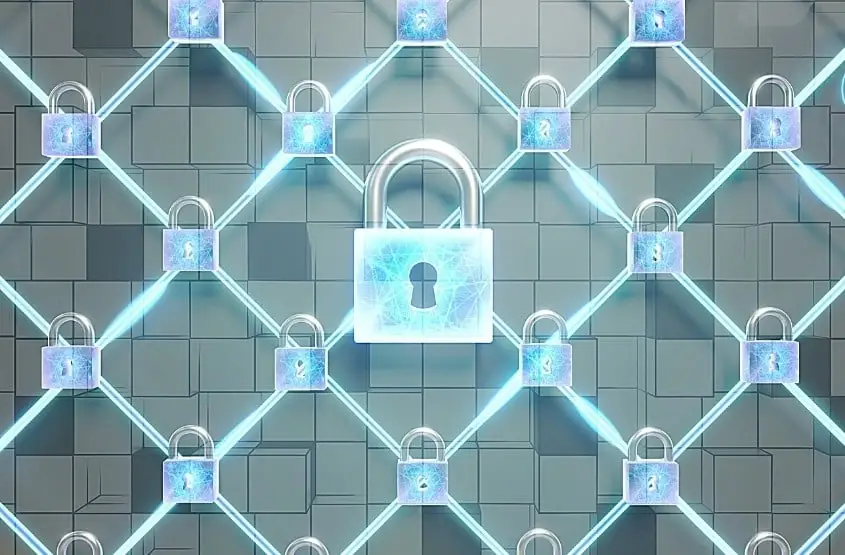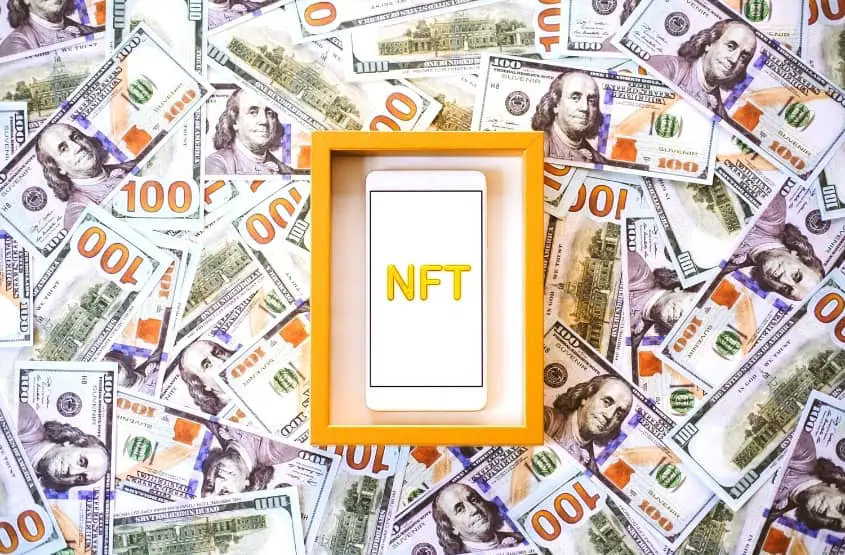When opportunities arise, many people tend to jump on board very quickly. That is exactly the case with minting NFTs. That being said, there are some things you should know before minting your own NFT.
What to Know Before Minting an NFT
Here are 12 things you should know before minting your own NFT.
1. Minting Your NFT Doesn’t Guarantee You Will Sell it
Minting your NFT can be very exciting, however, just because you create an NFT doesn’t mean you will make money. In fact, you can actually lose money if you aren’t careful. Creating an NFT that someone wants to buy takes a plan, patience, and consistency.
Also, you will need to learn how to market your NFT if you want to have the best chance of selling it.
If you aren’t providing value for others then you may never sell your NFT. Value can come in many forms such as a physical product, service, or perk of some sort.
Also, if you don’t build an audience you shouldn’t expect anyone to stumble upon your NFT project. You need to get your work in front of people’s eyes if you want a chance at selling your NFT.
Remember: Value, patience, and consistency are key.
2. There Are Multiple Blockchains You Can Mint On
There are many different blockchains you may choose to mint your NFT on. Each blockchain comes with its own pros and cons. Here is a list of blockchains you can mint on and some pros and cons of each:
| Blockchain | Pros and Cons |
|---|---|
| Ethereum | Pros: Most popular and commonly used NFT blockchain. Cons: You have to pay a gas fee. |
| Eosio | Pros: No transaction fees and conducts millions of transactions every second. Cons: Not as well-known as the Ethereum blockchain. |
| Tezos | Pros: Uses proof-of-stake mechanism making it a more energy-efficient blockchain option. Cons: A delay in token issuance can result in missed opportunities and rewards. |
| Flow | Pros: Quick and inexpensive transactions. Especially good for game and app NFTs. Cons: Some users have reported negative experiences such as slow transaction times. |
Keep in mind that each of these blockchains utilizes its own cryptocurrency. When you decide which blockchain you want to use to create your NFT, understand you will also be using that blockchain’s supported cryptocurrency for all of your transactions.
3. Anything Can Be Minted Into an NFT
Technically speaking, you can mint just about anything into an NFT if you want. Considering an NFT is data that is stored on a digital ledger, you can store any data you want.
Let’s say you want to sell your own brand of watches, you can create an NFT that also implements the use of smart contracts allowing you to write your own terms for each physical watch. For example, you can write terms such as: “With the purchase of this NFT, you will receive 1 physical watch.”
Not only does the physical watch add additional value, but the NFT itself acts as the promise between the creator and the consumer—creating a whole new layer of transparency and trust that has not been available in the same form before.
4. You May Have to Pay Fees to Mint
Depending on which blockchain you choose to mint your NFT, there may be gas fees that you have to pay. Blockchains like Ethereum, Tezos, and Flow all require a fee to transact.
These fees don’t go to one specific entity, but rather to a pool of people spread across the world who use their own computers to solve algorithms that verify your transaction on the blockchain.
It’s important to be aware of the transaction fees for the blockchain you use, as they can make or break your budget.
Tezos fees are based simply upon the amount of gas consumed and any additional storage needed to create your NFT.
Flow charges a per-basis transaction fee. This fee will include a processing fee as well as a computation fee if your request is more complex.
Ethereum gas prices are determined by the demand on the blockchain at the time of your transaction.
You can check current Ethereum gas fees here: EtherScan.io
5. There Are Numerous Marketplaces to Mint Your NFT
Whether you are trying to decide which marketplace to mint your NFT or which one to sell your NFT on, there are numerous options.
Ultimately, it comes down to your specific goals and budget. A blockchain like Ethereum is the most popular, but it also comes with the highest transaction fees. Whereas a blockchain like Tezos isn’t as popular, but, it’s super cheap to mint your own NFT.
If you still don’t know which marketplace is right for you, then check out the 13 best NFT marketplaces for buying and selling NFTs.
6. Minting Your Own NFT Is Easy
Minting your own NFT may seem like a difficult concept to wrap your head around but it’s actually very simple.
In order to mint an NFT, you need to obtain a crypto wallet and purchase your blockchain’s accepted cryptocurrency for transaction fees. Then, it’s as easy as uploading your desired media file, writing any terms for your smart contract, and setting a price. If you can use Amazon or eBay, then you can create your own NFT.
If you want more insight into the process of obtaining a web3 wallet and cryptocurrency, as well as minting your NFT, check out my in-depth guide.
7. NFTs Are Safe to Create
Understandably, many people are hesitant when it comes to the overall safety of their identity and personal information. There are certainly some things you need to be aware of in order to stay protected when transacting on the blockchain.

The best way to stay safe when minting your NFT is to never give anyone your 12-word secret phrase. Many scammers will request this phrase to gain access to your crypto wallet. Also, ensure that the sites you use have a solid reputation in the industry. For added security, consider storing your NFTs in a secure wallet, such as a hardware wallet.
Using common sense can go a long way in protecting yourself on the blockchain. Avoid giving out any personal information. Also remember if it’s too good to be true, then it probably is.
8. Minting NFTs Are Not Eco Friendly
A common concern when minting NFTs is their effect on our planet. Non-fungible tokens are not the most eco-friendly way of transacting, but that doesn’t mean there isn’t hope for the future.
Minting NFTs on blockchains requires computers to solve specific algorithms in order to verify transactions. These computers consume a notable amount of energy solving these algorithms, leading to an increased carbon footprint and greenhouse gas emissions.
9. You Can Make An Income Creating NFTs
As NFTs and web 3.0 technology continue to evolve, you may find yourself wondering if you can make a liveable income creating and selling NFTs.

It is very possible to make a full-time income buying, creating, and selling your own NFTs. In order to make an income creating and selling NFTs, you need to build a reputable brand and business around your NFT in order to increase the supply and demand for what it is you are offering.
If you are expecting to upload a random piece of art with no underlying value or goal, don’t expect to sell many NFTs.
10. Creativity and Value Is Key to Minting Successful NFTs
When it comes to minting NFTs that people want, there is a lot of thought that should go into the creative aspect of your NFTs which will, in turn, make them successful.
Focusing on the creative aspect of minting your NFT may lead to better success overall and may add more value where other NFTs may lack. These are the questions you should ask yourself when determining if your NFT will be a success after minting.
- What are you offering to your consumer?
- Why are you offering your product or service?
- Is there a demand for your product or service?
- How can you present your NFT in a creative way to make it stand out from others?
- Are you creating NFTs just for the money?
Read over these questions amongst yourself and answer them honestly. This may help you make a better decision when figuring out if your NFT project will be successful or not.
11. Implementation of Smart Contracts Can Add Value
NFTs are simply digital records of transactions that are recorded on the blockchain as proof. That doesn’t mean you can’t create additional value by implementing the use of smart contracts though.
Using smart contracts when creating your NFT adds additional value by allowing you to create terms, conditions, and extra perks for your token holders. Smart contract terms may include a physical item, service and anything else you want may want to add.
Smart contracts are the future of NFTs, get comfortable using them and get creative!
12. NFTs Are More Than Just Art

A common misconception amongst the NFT community is that NFTs are pieces of art. Although this may be true to some extent, NFTs can be so much more than just art.
NFTs are a layer of technology that allows people to transact in a transparent and trustworthy setting. This means you may have the opportunity to add value and improve your customer relations. Think of NFTs as proof of your promise to deliver a product or service to your consumers.
Now that you are all caught up on the 12 things you should know before minting your NFT, you are ready to start creating.

5 thoughts on “12 Things You Should Know Before Minting An NFT in 2023”
Comments are closed.